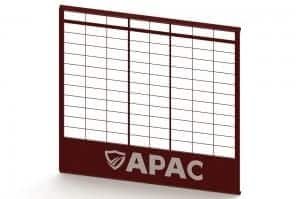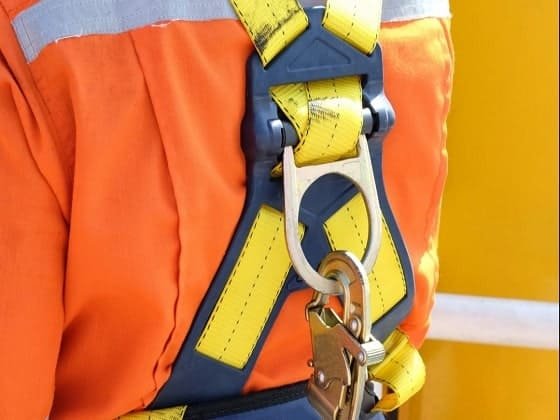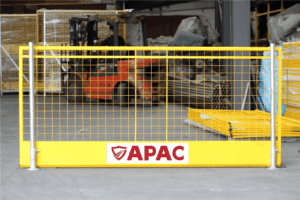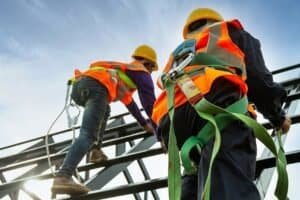introduction
Fall protection is an essential part of the construction industry, and workers must make sure they are protected from falls. This is especially true for those who work on leading and sharp edges. Leading edges often pose a threat because they have gaps between them and the floor below, potentially allowing workers to fall through if they do not use proper safety equipment. Sharp edges can also be dangerous if workers are not wearing the right gear while working on these surfaces. OSHA requires that all workplaces meet certain standards when it comes to fall protection gear in order to keep workers safe on the job site. In this article, there are some tips for you.
What are leading edges and sharp edges?
In many cases, leading and sharp edges can be dangerous because they are exposed to falls. However, it’s important for workers to recognize these hazards and take precautions before working at them.

A sharp edge is a non-rounded, a very, very sharp edge that poses a cutting hazard to the lifeline. That’s equivalent if you think of the cut end of an I-beam that’s about how sharp that is and there are some definite hazards there when people are working on leading edges that are sharp and don’t have the proper equipment or don’t have their systems properly put in place.
The leading edge is any situation where the worker is exposed to the edge of the work surface that may fall. It is any horizontal surface extending beyond the building and can be made of concrete, steel, or other material. Types of Leading Edges Found in Construction:
- Roof edge
- Concrete Slab Edge
- Steel Structure Edge
- Formwork Edge

Ensuring Your Employees Are Working in a Safe Environment
The Importance of Training

Specially designed equipment is needed to keep workers safe at the leading edge and at sharp edges, but such equipment is only effective if the crew knows how to use it and why it is needed. Proper training is essential to ensure that workers are fully engaged and aware of the unique hazards of working at different application heights. Employers should provide regular training that meets ANSI and OSHA requirements to ensure worker safety on the job. Some fall protection providers also offer on-site training to help workers better understand and avoid the hazards of working at heights.
Use Proper Fall Protection Equipment
- Install and Use Anchor Systems Properly to Meet OSHA Requirements
- Install anchor systems at least 10 feet away from the leading edge.
- Anchor systems must be installed on the side of the leading edge where workers are working.
Anchor systems must be installed at a height that is appropriate for the task being performed.

Use a harness, lanyard, and rope.
A harness fits around your waist and connects to an upper body support device (like a belt or vest) that supports your body weight and distributes it evenly across the entire torso—in other words, if you fall while wearing this gear, there will be less pressure on any single part of your body.
The lanyard connects from the top of this upper body support device down through an anchor point on either side of where you’re standing or working to ensure that if anything happens unexpectedly during work hours (like if someone trips over their own feet), then they’ll still be able to hold onto something before they go tumbling off their platform or ladder down below!
Finally, rope is typically used in conjunction with both lanyards and harnesses—if needed—so that workers can safely climb higher into dangerous situations without fear about whether or not they’ll be able to keep themselves safe while doing so!
Make sure all knots are tied correctly so there aren’t any loose ends sticking out where people could trip over them during normal operations within certain environments such as construction sites where loads might get dropped accidentally by accident due to human error which could cause serious injuries such as broken bones etc.
Workers must ensure the anchor systems can support their weight if they fall.

Protecting the edge to reduce damage

Protecting edges means using edge protection systems or guardrails. Edge protection system is a relatively new equipment, it usually consists of edge protection foot, edge protection barrier and edge protection post, this is a passive protection, many people may still be relatively new to it, first appeared in the UK, and later accepted and used by more and more countries. It is suitable for high buildings and can effectively prevent workers from falling.
Guardrail Systems compared to the edge protection system, is more common to protect the edge of the equipment, it can also achieve the purpose of preventing falling, but the height of protection is not as high as the edge protection system, but its price is generally cheaper, is also a very good choice for fall prevention.
Conclusion
This article gives you a basic understanding of how to work on leading and sharp edges. You should now know that when it comes to leading edge and sharp edge situations, the bottom line is to protect your employees.
Finally, be aware of the risks and hazards associated with your workplace, provide proper fall protection equipment, and train workers to use this important equipment properly. These are the essential steps needed to save lives in the event of a fall.











